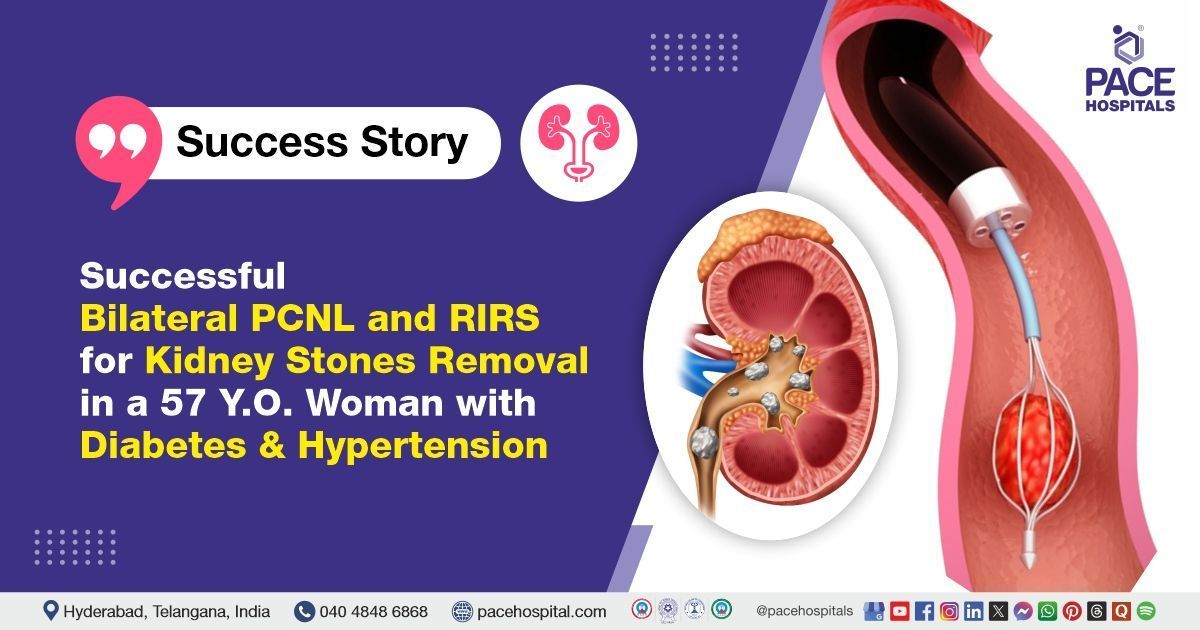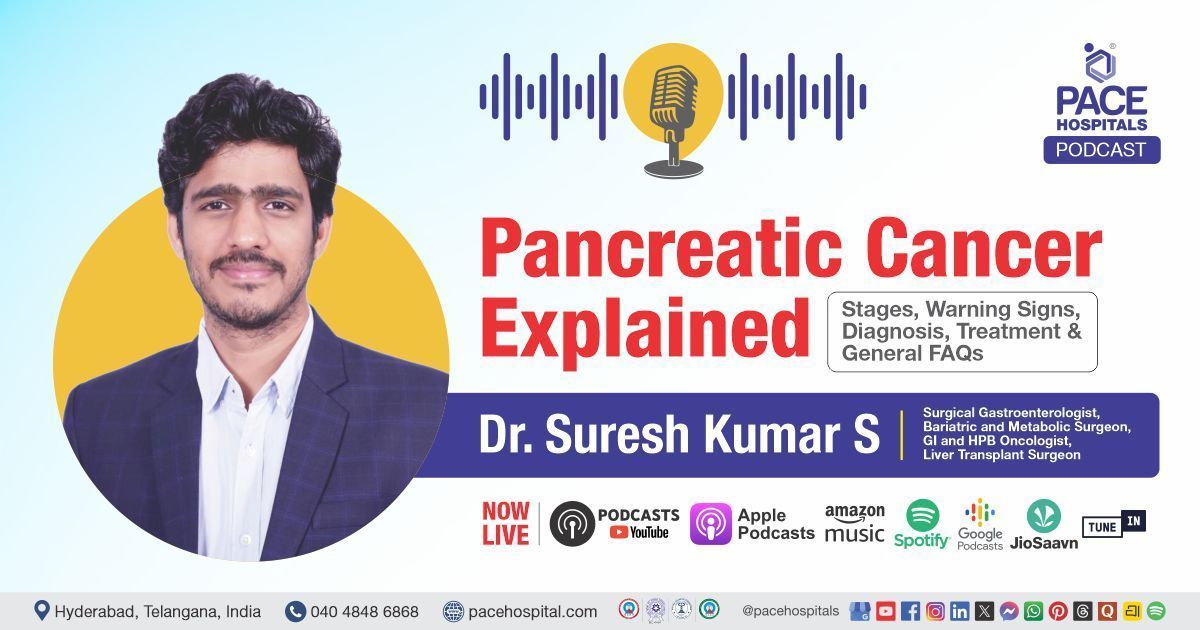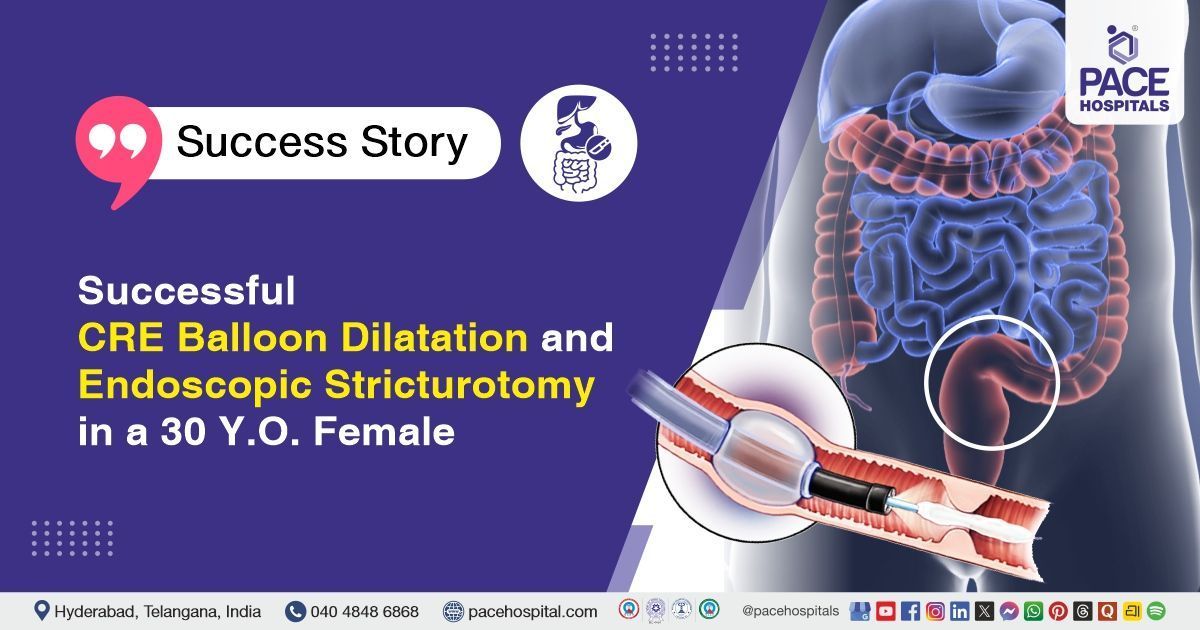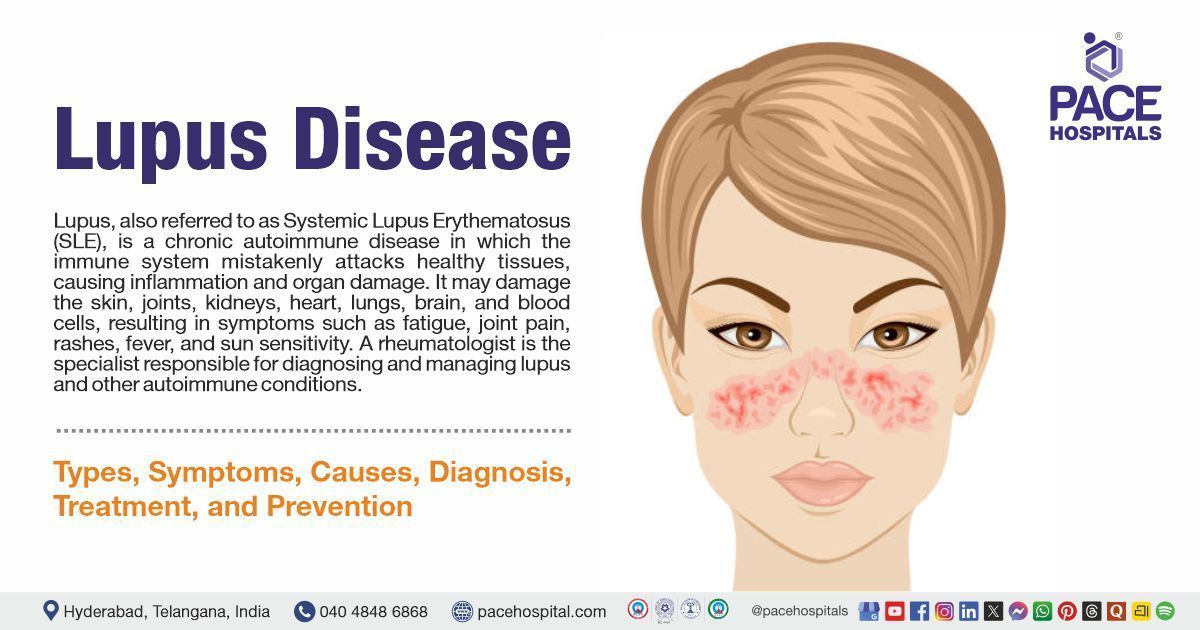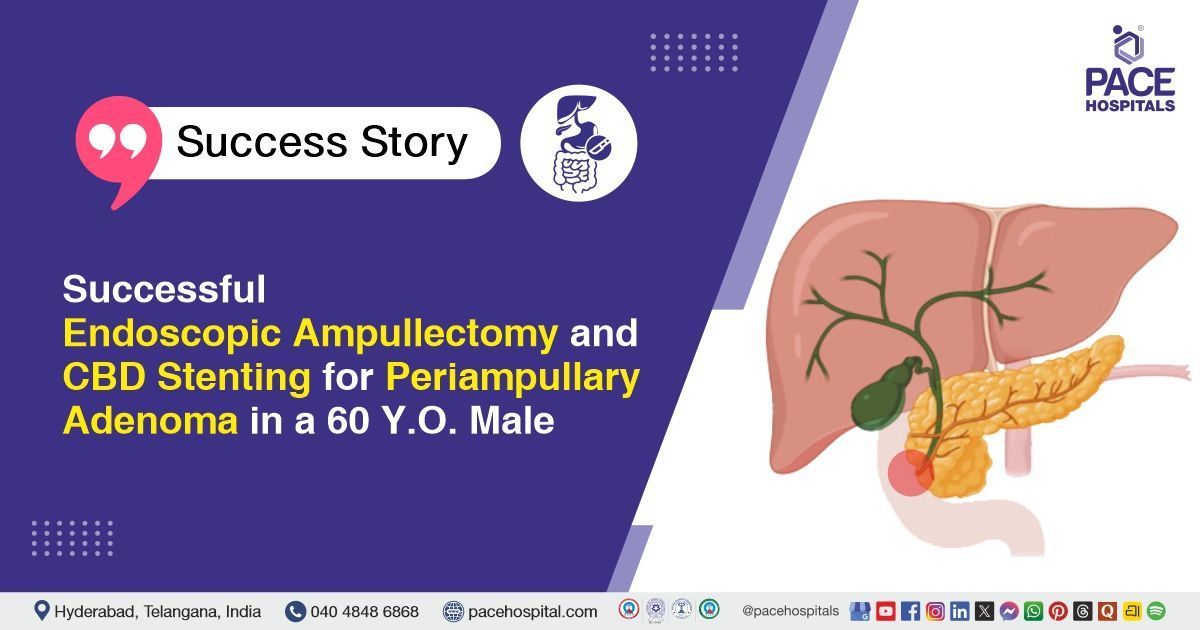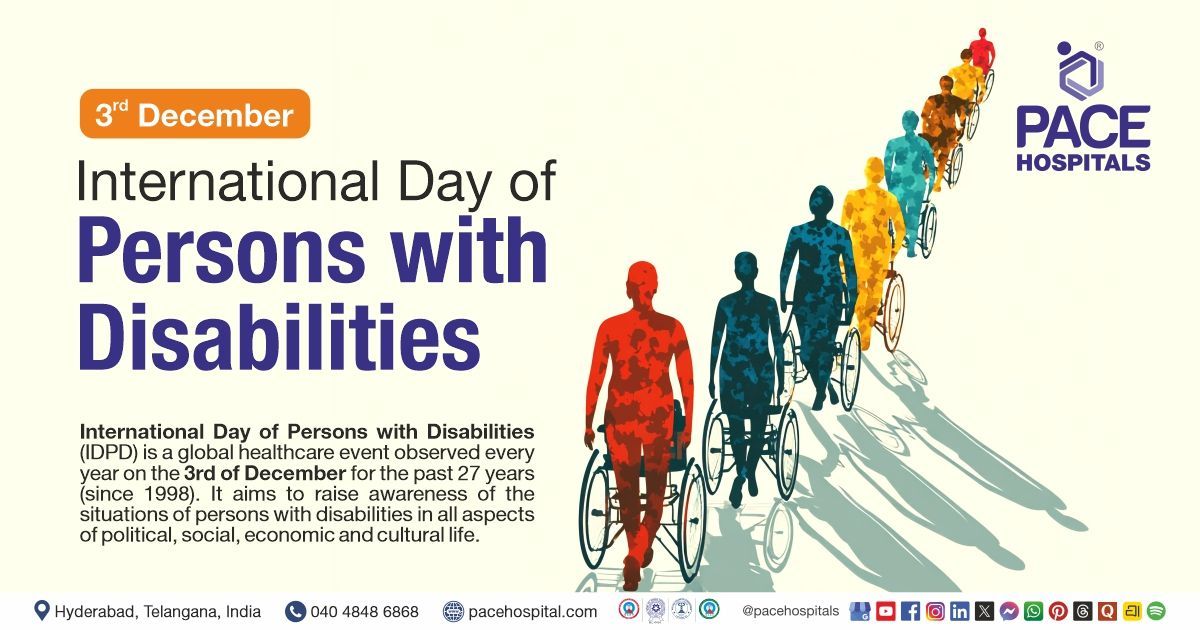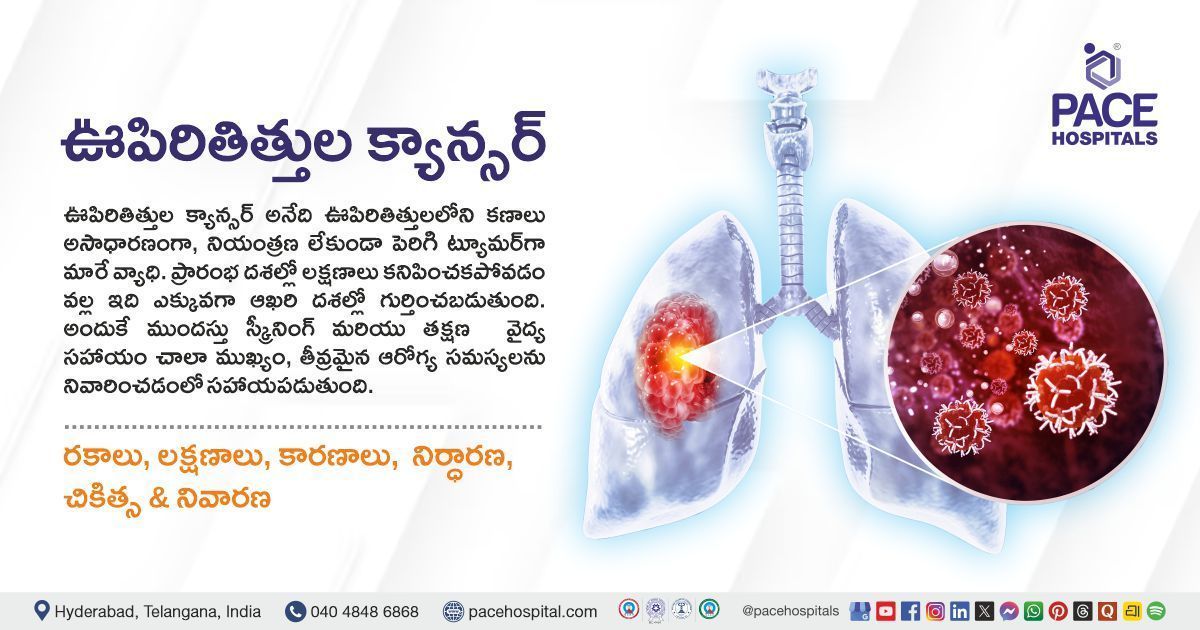Successful Bilateral PCNL & RIRS for Kidney Stones Removal in a 57-Y.O with Diabetes & HTN
PACE Hospitals
The PACE Hospital's expert Urology team successfully performed Bilateral Percutaneous Nephrolithotomy (PCNL), Retrograde Intrarenal Surgery (RIRS) and DJ stenting on a 57-year-old female patient who had presented with bilateral flank pain. These procedures were performed to remove kidney stones, alleviate the patient's symptoms, and help restore normal kidney function.
Chief Complaints
A 57-year-old female patient with a
body mass index (BMI) of 21.2 presented to the Urology Department at
PACE Hospitals, Hitech City, Hyderabad, with complaints of bilateral flank pain. A detailed evaluation was carried out to determine the underlying cause of her symptoms.
Past Medical History
The patient is a known case of hypertension and diabetes mellitus (DM), which are well-controlled with regular medication and no significant history of drug allergies. This information was considered during treatment planning to avoid potential complications and ensure safe medication use.
On Examination
On examination, the patient was conscious, coherent, and oriented, with stable vital signs. Abdomen was soft, non-distended, with mild bilateral flank tenderness. Renal angle tenderness was present on both sides. No guarding, rebound tenderness, or palpable masses noted. Cardiovascular and respiratory systems were within normal limits.
Diagnosis
Upon admission to PACE Hospitals, the patient underwent a comprehensive evaluation, including a detailed review of her medical history and physical examination by the Urology team. Given her symptoms of bilateral flank pain, there was a high clinical suspicion of renal calculi (kidney stones).
A renal ultrasound and non-contrast CT scan: These were performed to assess the presence, size, and location of renal calculi, as well as to evaluate for hydronephrosis or other signs of obstruction. Imaging studies revealed bilateral renal calculi, with multiple stones identified in both kidneys. Laboratory investigations, including complete blood count (CBC), serum creatinine and urea, liver and kidney function tests, urinalysis, electrolytes, coagulation profile, and infection screening, were all within normal limits and showed no indications of systemic infection.
These diagnostic evaluations collectively confirmed the provisional diagnosis of bilateral renal calculi and guided the medical team in planning an appropriate treatment approach.
Based on the confirmed diagnosis, the patient was advised to undergo
kidney Stones Treatment in Hyderabad, India, under the expert care of the Urology Department.
Medical Decision Making
Following a detailed consultation with Dr. Abhik Debnath, Consultant Laparoscopic Urologist, a comprehensive evaluation of the patient's condition was conducted to determine the most suitable diagnostic and therapeutic approach. A urology team collaborated to assess the patient’s complex presentation, ensuring a tailored treatment plan based on her clinical needs.
Imaging and diagnostic studies confirmed bilateral renal calculi, some of which were large and located in anatomically challenging positions. As a result, a combined minimally invasive approach involving Bilateral Percutaneous Nephrolithotomy (PCNL) and Retrograde Intrarenal Surgery (RIRS), with DJ stenting, was identified as the most effective treatment strategy to ensure optimal stone clearance and preserve renal function.
The patient and her family were informed about her condition, the procedure, its associated risks, and its potential to alleviate symptoms and enhance her quality of life.
Surgical Procedure
Following the decision, the patient was scheduled for bilateral Percutaneous Nephrolithotomy (PCNL) combined with Retrograde Intrarenal Surgery (RIRS) and DJ stenting surgery in Hyderabad at PACE Hospitals, under the expert care of the urology department.
- Anaesthesia and Patient Positioning: The procedure was carried out under general anaesthesia. The patient was initially placed in the lithotomy position to facilitate retrograde intrarenal surgery (RIRS). After completion of the endoscopic portion, the patient was repositioned into the prone position for percutaneous nephrolithotomy (PCNL). All aseptic precautions were strictly followed throughout the surgery.
- Retrograde Intrarenal Surgery (RIRS): Bilateral flexible ureteroscopy was performed via the urethral route to access the kidneys. On RIRS evaluation, moderately hard calculi were identified in the renal pelvis and lower pole of both kidneys. Laser lithotripsy was used to perform bulk fragmentation of the stones, reducing their size significantly. Further stone clearance, especially from the posterior lower calyces, was planned via the percutaneous route.
- Percutaneous Nephrolithotomy (PCNL): A lower posterior calyceal puncture was made under fluoroscopic guidance to access the collecting system. Serial tract dilation was carried out using metal dilators. A nephroscope was then introduced through the tract for direct visualization.
Stone fragments were identified and further disintegrated using pneumatic and laser lithotripsy techniques. The stones were cleared completely from the collecting system with the help of suction and graspers. Inspection confirmed complete stone clearance bilaterally.
- Bilateral DJ Stenting: Following complete removal of calculi, retrograde DJ (Double-J) stenting was performed bilaterally using cystoscopic guidance. This ensured adequate post-operative urinary drainage and helped to prevent ureteric obstruction or injuries during the healing period.
- Hemostasis: It is the process of stopping bleeding, and it was achieved. The procedure concluded without complications, and the patient was shifted to the recovery room in stable condition.
Postoperative Care
After surgery, the patient was monitored closely in the surgical intensive care unit to ensure stability. Her postoperative course was uneventful. The nephrostomy tubes were removed on postoperative day 3, and the Foley catheter was removed on postoperative day 4. During her hospital stay, she received intravenous antibiotics to prevent infection, analgesics for pain relief, antiemetics to control nausea, and gastric protectants. The patient was discharged in stable condition.
Discharge Medications
Upon discharge, the patient was prescribed an oral antibiotic to prevent infection, an analgesic/antipyretic for pain and fever control, and a proton pump inhibitor to protect the stomach lining. An alpha-blocker was given to improve urinary flow, and urinary alkalizers were prescribed to maintain optimal urinary pH and minimize the risk of stone recurrence. A nutritional supplement was recommended to support overall healing. The patient was also advised to continue her existing prescribed combination therapy for hypertension and antidiabetic medications to ensure optimal blood pressure and blood glucose control.
Advice on Discharge
The patient was advised to follow activity restrictions, including avoiding weightlifting, forward bending, and straining during bowel movements. The patient was also advised against long-distance travel by bus, auto-rickshaw, or two-wheeler for the specified period. She was also informed that mild flank discomfort, occasional haematuria, or cloudy urine may persist for up to 7–10 days after discharge, which are expected postoperative symptoms.
Dietary Advice
The patient was advised to follow a low-salt and diabetic diet.
Emergency Care
The patient was informed to contact the emergency ward at PACE Hospitals in case of any emergency or development of symptoms like fever, abdominal pain, swelling, bleeding, or vomiting.
Review and Follow-up Notes
The patient was advised to return for a follow-up visit with the Urologist in Hyderabad at PACE Hospitals after 2 months for DJ stent removal.
Conclusion
This case highlights the successful management of complex bilateral renal calculi in a patient with hypertension and diabetes mellitus using a combined minimally invasive approach of bilateral PCNL, RIRS, and DJ stenting. This comprehensive treatment resulted in complete stone clearance, effective symptom relief, and restoration of normal kidney function, underscoring the safety and efficacy of these techniques for large and multiple kidney stones, even in patients with comorbidities.
Enhancing Patient Outcomes in Kidney Stone Treatment through Combined Minimally Invasive Approaches
The combined minimally invasive approach using PCNL and RIRS has become a leading option for kidney stone management, offering high stone-clearance rates, especially for larger or more complex stones. The
urologist / urology doctor carefully selects this method for patients because PCNL is highly effective at clearing big or multiple stones, while RIRS is particularly useful for targeting smaller or harder-to-reach stones within the kidney. By combining both techniques, patients can benefit from a single procedure to address stones of various sizes and locations, reducing the likelihood of needing additional treatments. Studies show that this approach results in higher stone-free rates and is associated with less postoperative pain and blood loss than open surgery, as well as quicker recovery and shorter hospital stays. Additionally, because these methods are less invasive,
Share on
Request an appointment
Fill in the appointment form or call us instantly to book a confirmed appointment with our super specialist at 04048486868

